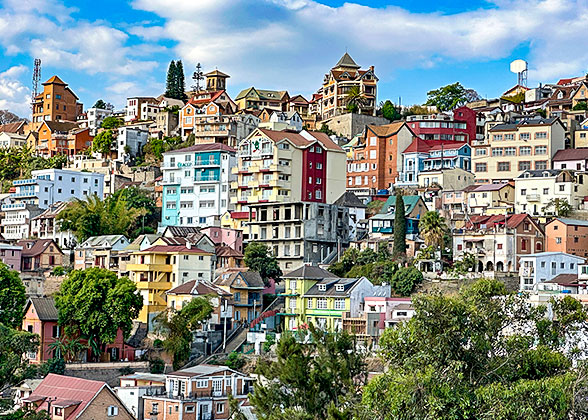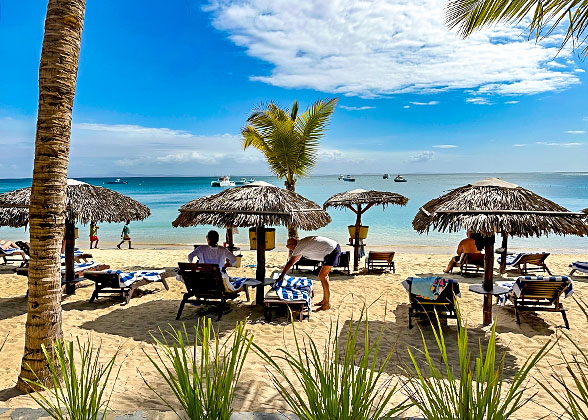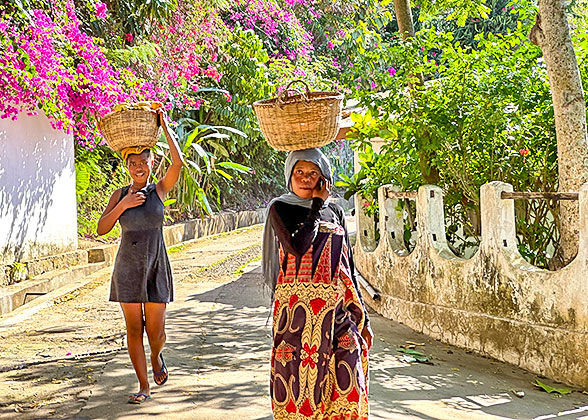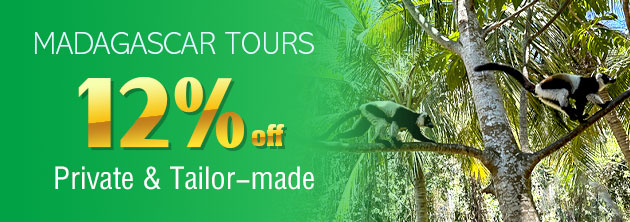Madagascar Weather in July
![]() Season: Dry Season
Season: Dry Season
In Short: dry & cool, low precipitation
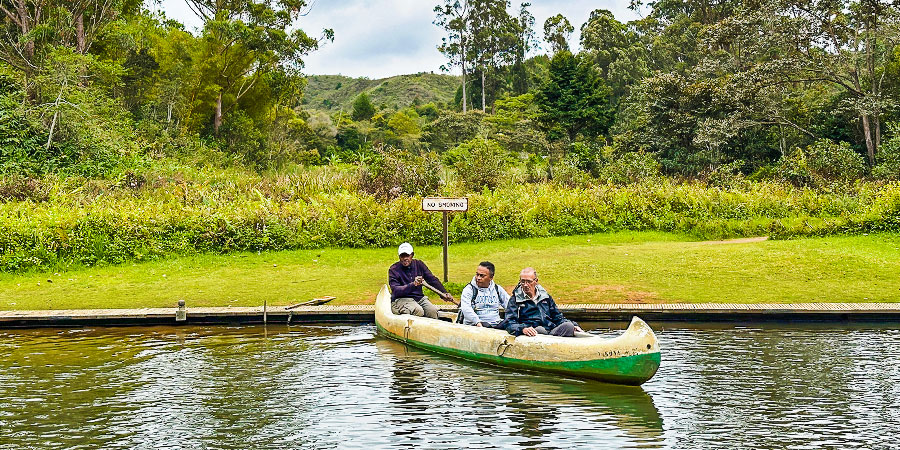
Sightseeing to Vakona Reserve in July
|
![]() The warmest cities in Madagascar in July
The warmest cities in Madagascar in July
Toliara: 18.8-25.8°C (65.84°F-78.44°F); Mahajanga: 20.3-28.8°C (68.54°F-83.84°F); Antisiranana: 19.6-28.7°C (67.28°F-83.66°F)
![]() The coldest cities in Madagascar in July
The coldest cities in Madagascar in July
Antananarivo: 9.5-20.4°C (49.1°F-68.72°F); Fianarantsoa: 9.3-17.8°C (48.74°F-64.04°F); Toamasina: 17.1-24.8°C (62.78°F-76.64°F)
What to Wear to Visit Madagascar in July

|
The temperature during the day is Okay for boys to wear T-shirt, Polo-shirt and shorts. Girls can pick blouse, skirt or long dress to keep you cool. If you are sensitive to temperature, thin long-sleeved tops and pants are also acceptable. By the way, light-colored clothes will reduce the absorption of heat, and cotton clothes will absorb sweat better. At night, the average temperature is relatively low, which means jeans, windbreaker, jacket or thin sweater are advised for you to wear.
Others: It’s a good decision to bring your bathing suit for your beach trips. If you don’t want your skin to be completely exposed to the sun, a long smock is also necessary.
Top Things to Do in Madagascar in July
Tourism Rate: 




Sainte Marie in July
|
1. Whale-Watching in Sainte Marie Island
Madagascar’s annual whale-watching feast is held in July. Thus the first thing you must do here and now is to watch whales on the Sainte Marie Island, which is considered the best place to view whales all over the Indian Ocean. You won’t want to miss out on this enjoyable experience of interacting with whales. Every year from July, a large number of whales migrate from south to north to breed near Sainte Marie. Visitors can not only overlook the whales from the ship, but also dive in the sea to get up close and personal with whales. In addition to whales watching, another highlight of it is the grand celebrations, including canoe races, ball rolling competitions and beach parties.
![]() Tips:
Tips:
2. You can optionally bring a camera and telescope so you can get a closer look at them.
3. The sea wind is rather cold. You’d better choose long-sleeved tops and pants that dry quickly to prevent catching a cold after being wet by the sea water.
4. The sunlight at sea is very strong, you must do a good job in sun protection. And bring drinkable water in case of heatstroke.
2. Kitesurfing in Sakalava Bay
Sakalava Bay is one of the world’s most popular kitesurfing destinations, attracting many surfers every year. It is suitable for kitesurfing mainly due to the continuous wind blowing along the northern coast of the island from May to October. In addition to kitesurfing, you can do lots of other water sports here, as it is the safest, with a quick crosswind back to the bay. Owing to optimal bay conditions and marvelous coastal scenery, Sakalava Bay is a perfect site for surfers to get the thrill and pleasure.

Kitesurfing in Sakalava Bay in July
|
![]() Tips:
Tips:
2. Do not kitesurf alone in unknown places and stay away from rocks and reefs. It is quite dangerous if you lose control while kitesurfing.
3. The string of the kite is very strong and very sharp in the air, so do not touch the string of a moving kite.
4. If you can’t swim, wearing a life jacket can effectively protect you if the kite falls into the water.
3. Wildlife-Observing in Ranomafana National Park
Ranomafana National Park is one of the largest rainforests in Madagascar and the roads here are terrible when it rains, so visiting the park in July, the dry season is a good choice. From rainforests to mountains, meadows and flats, there are all kinds of ecological environments in this park. It is this diversity that makes the park home to many rare and endangered wildlife species. Along the way, you can observe not only rushing waterfalls and lofty rainforests, but also many unique birds, reptiles and insects.

Watch Lemurs in Ranomafana NP
|
![]() Tips:
Tips:
2. Always spray mosquito repellent on your body when visiting nature reserves.
3. Do not touch unknown plants or animals directly to avoid injury.
If you have a plan to visit Madagascar in July, 2026, please check our Best Private Madagascar Tours.
July Weather of Major Madagascar Cities
| City | Temp |
Rainfall (mm) |
Humi- dity (%) |
Sunrise/ Sunset |
|
Andasibe |
9-21°C |
17 | 75 |
06:11/ |
|
Antananarivo |
9.5-20.4°C (49.1°F-68.72°F) |
10.8 |
77 |
06:25/ 17:27 |
|
Antsirabe |
9-21°C (48°F-70°F) |
17 |
75 |
06:19/ 17:24 |
|
Antsiranana |
20-28°C (68°F-82°F) |
21 |
62 |
06:06/ 17:30 |
|
Fianaranstoa |
9.3-17.8°C (48.74°F-64.04°F) |
9 | 84 |
06:32/ 17:20 |
| Ifaty |
14-26°C (57°F-79°F) |
5 | 62 |
06:38/ 17:32 |
|
Mahajanga |
18-32°C (64°F-93°F) |
2 |
60 |
06:21/ 17:36 |
|
Morondava |
20.3-28.8°C (68.54°F-83.84°F) |
3 |
62 |
06:37/ 17:39 |
|
Nosy Be |
24-26°C (75°F-79°F) |
24 |
62 |
06:10/ 17:30 |
|
Sainte Marie Island |
17-25°C (63°F-77°F) |
195 |
86 |
06:09/ 17:23 |
|
Toamasina |
9.3-17.8°C (48.74°F-64.04°F) |
288.6 | 84 |
06:15/ 17:20 |
|
Toliara |
14-26°C (57°F-79°F) |
6 |
62 |
06:44/ 17:28 |

